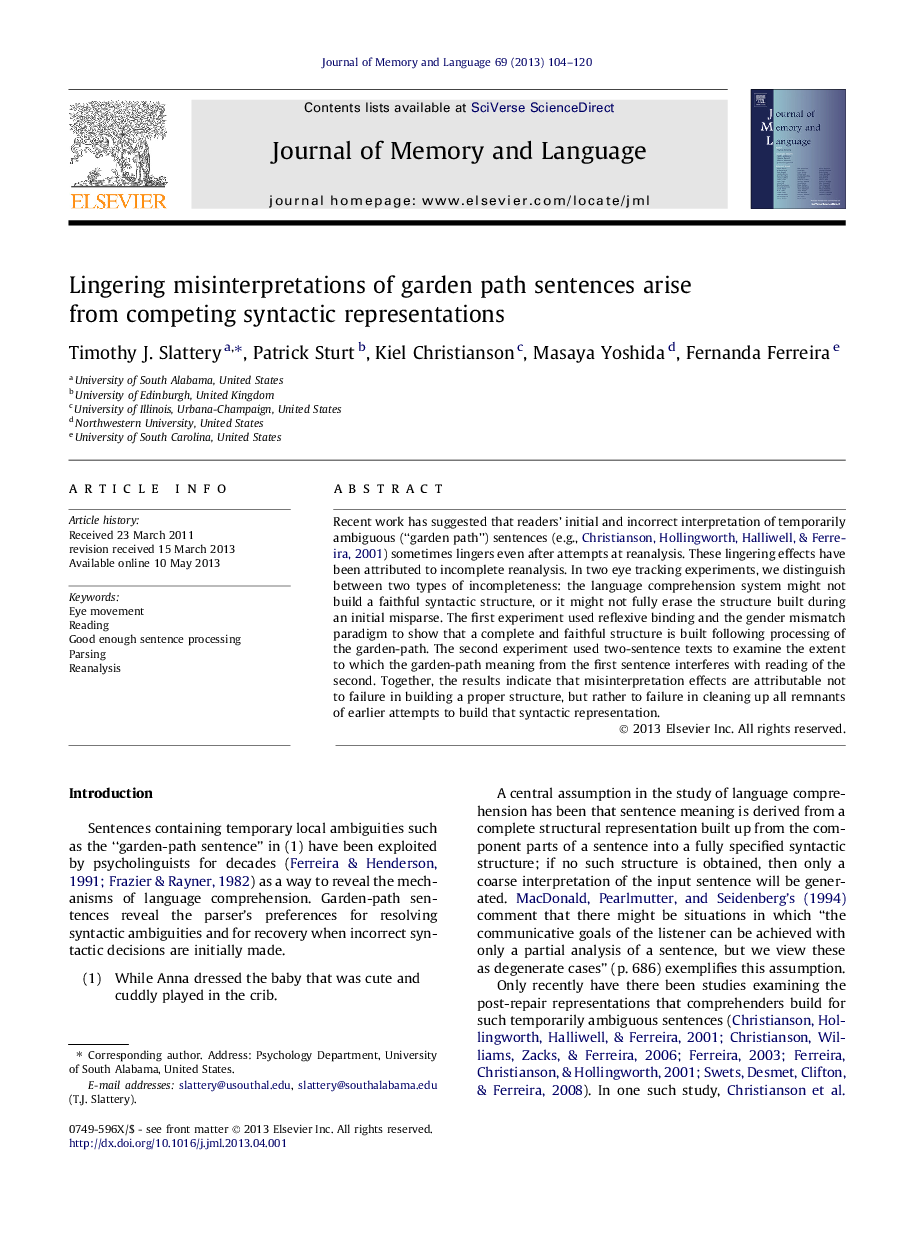| Article ID | Journal | Published Year | Pages | File Type |
|---|---|---|---|---|
| 10459745 | Journal of Memory and Language | 2013 | 17 Pages |
Abstract
Recent work has suggested that readers' initial and incorrect interpretation of temporarily ambiguous (“garden path”) sentences (e.g., Christianson, Hollingworth, Halliwell, & Ferreira, 2001) sometimes lingers even after attempts at reanalysis. These lingering effects have been attributed to incomplete reanalysis. In two eye tracking experiments, we distinguish between two types of incompleteness: the language comprehension system might not build a faithful syntactic structure, or it might not fully erase the structure built during an initial misparse. The first experiment used reflexive binding and the gender mismatch paradigm to show that a complete and faithful structure is built following processing of the garden-path. The second experiment used two-sentence texts to examine the extent to which the garden-path meaning from the first sentence interferes with reading of the second. Together, the results indicate that misinterpretation effects are attributable not to failure in building a proper structure, but rather to failure in cleaning up all remnants of earlier attempts to build that syntactic representation.
Keywords
Related Topics
Life Sciences
Neuroscience
Cognitive Neuroscience
Authors
Timothy J. Slattery, Patrick Sturt, Kiel Christianson, Masaya Yoshida, Fernanda Ferreira,
